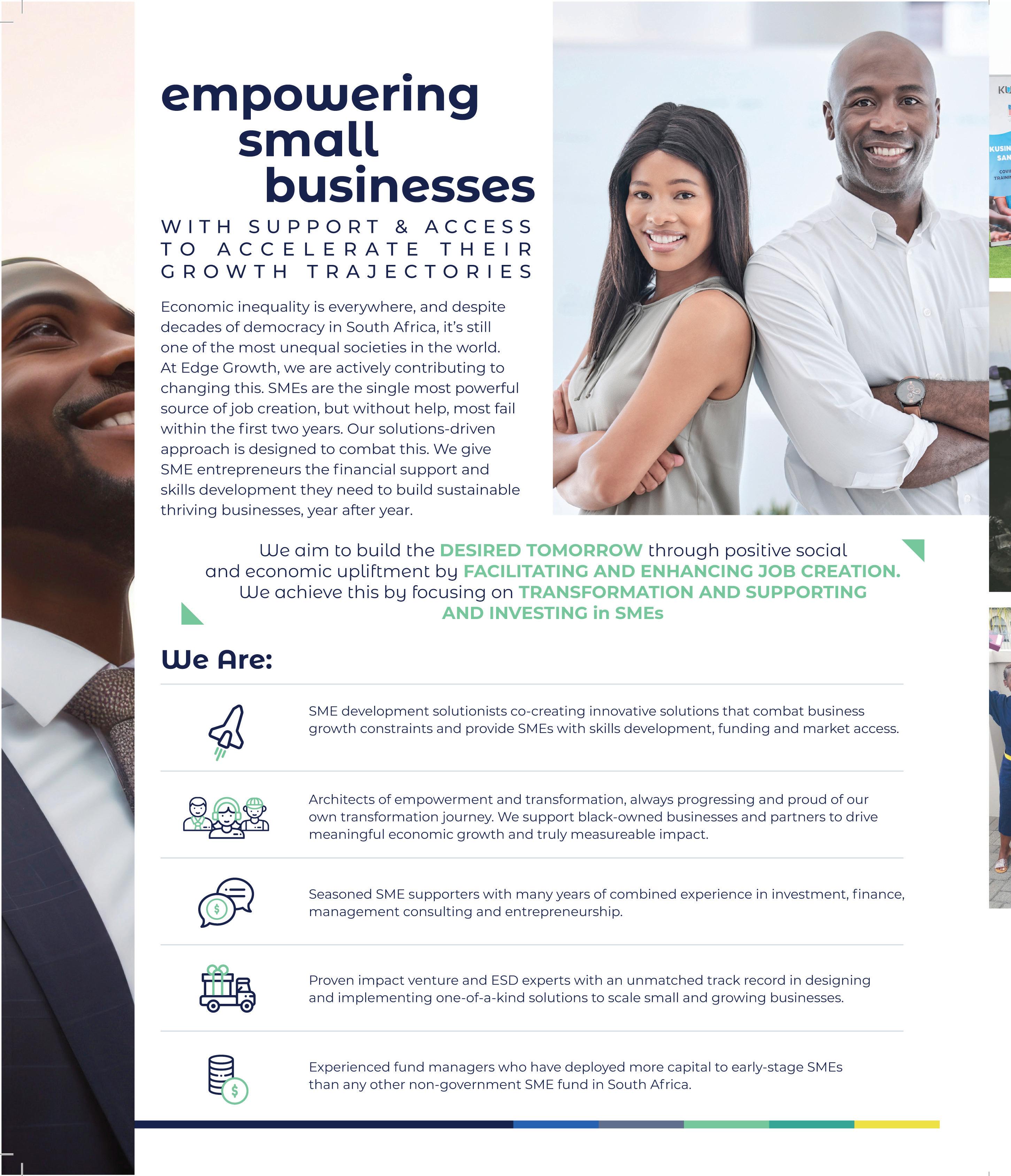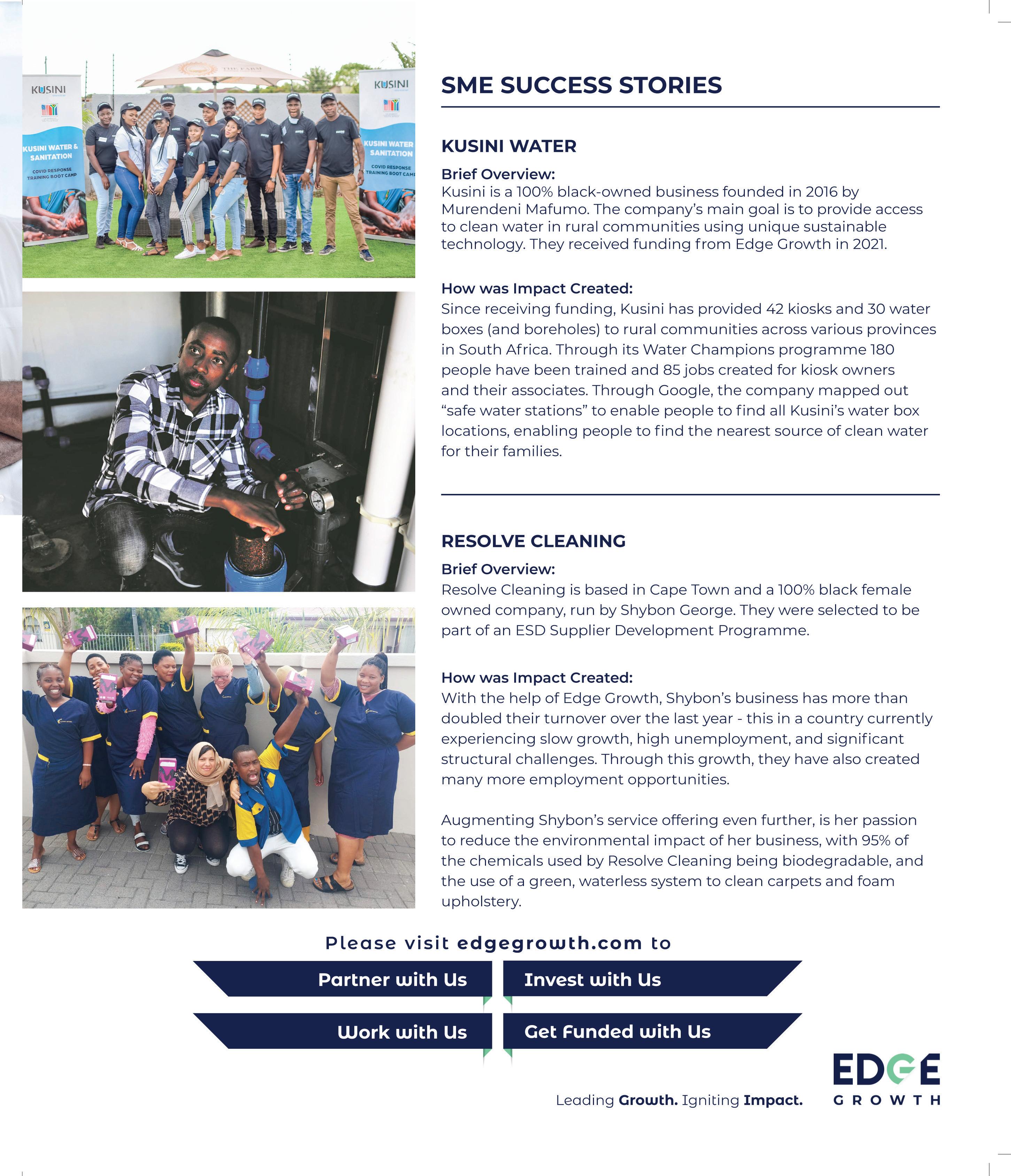


















Enhancing insight, efficiency and strategy




















Why deliberate policies, practices and targets focused on local procurement makes all the difference





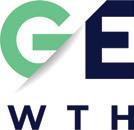









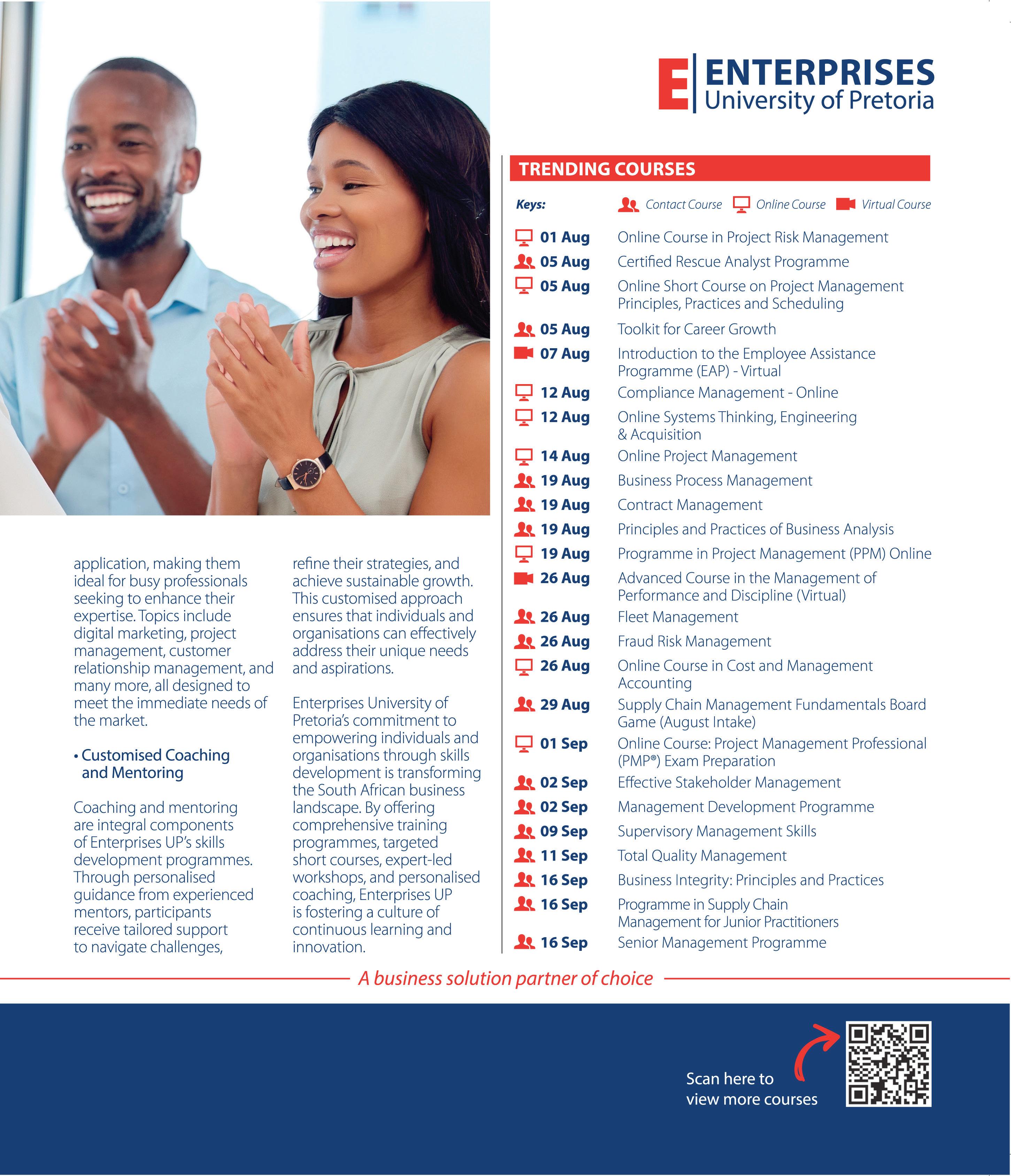

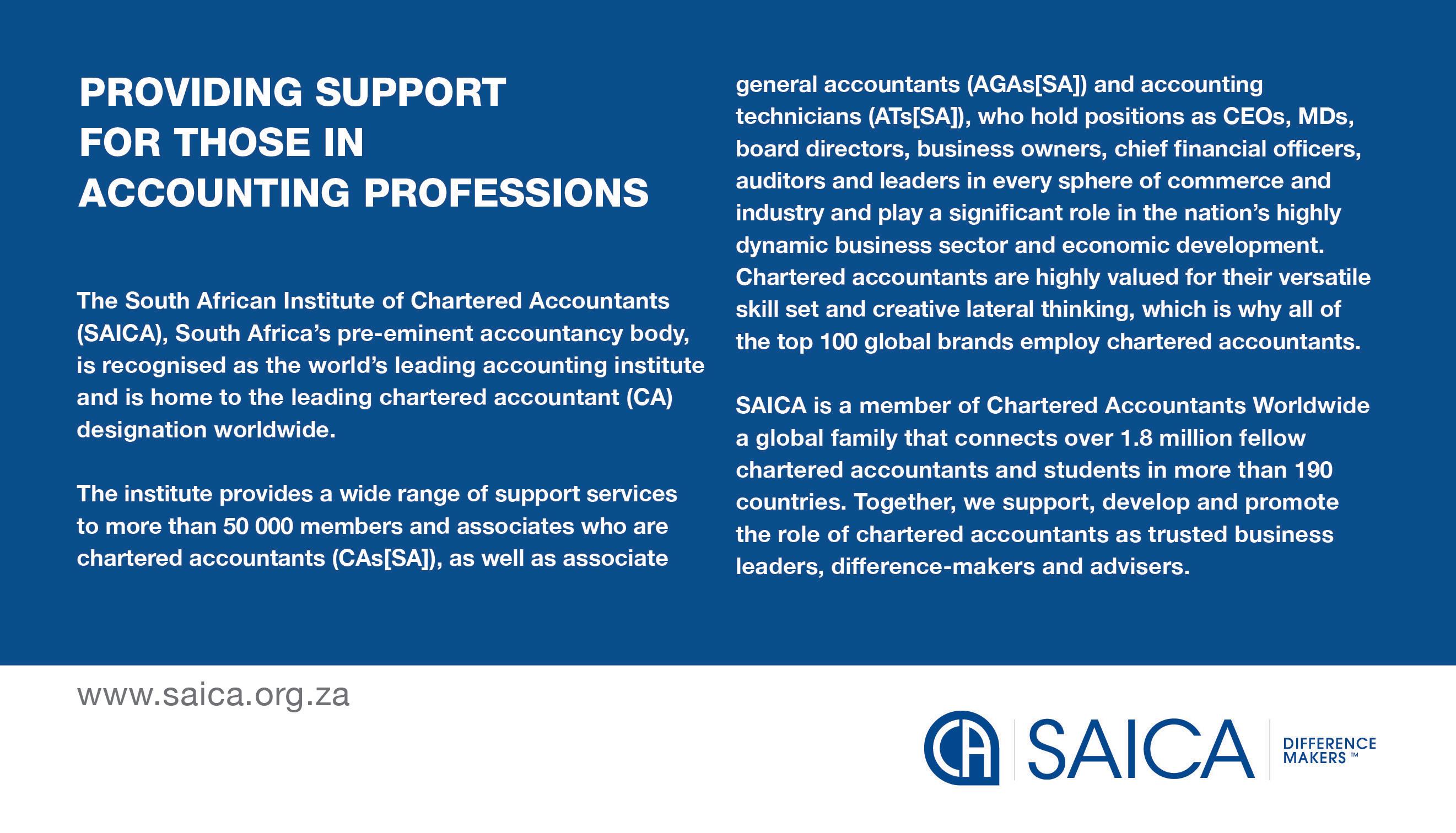
Enhancing insight, efficiency and strategy
PUBLISHED BY
Picasso Headline,
A proud division of Arena Holdings (Pty) Ltd, Hill on Empire, 16 Empire Road (cnr Hillside Road), Parktown, Johannesburg, 2193 PO Box 12500, Mill Street, Cape Town, 8010 www.businessmediamags.co.za
EDITORIAL
Editor: Lisa Witepski
Content Manager: Raina Julies, rainaj@picasso.co.za
Contributors: Trevor Crighton, Vukani Magubane, Busani Moyo, Thando Pato
Copy Editor: Brenda Bryden
Content Co-ordinator: Natasha Maneveldt
Digital Editor: Stacey Visser vissers@businessmediamags.co.za
DESIGN
Head of Design: Jayne Macé-Ferguson
Senior Designer: Mfundo Archie Ndzo
Designer: Bulelwa Sotashe
Cover Images: Supplied
SALES
Project Manager: Tarin-Lee Watts wattst@arena.africa
+27 79 504 7729
Sales:
PRODUCTION
Production Editor: Shamiela Brenner
Advertising Co-ordinator: Johan Labuschagne
Subscriptions and Distribution: Fatima Dramat fatimad@picasso.co.za
Printer: CTP Printers, Cape Town
MANAGEMENT
Management Accountant: Deidre Musha
Business Manager: Lodewyk van der Walt
General Manager, Magazines: Jocelyne Bayer
“Atick-box exercise.” This damning sentiment has been repeatedly used to describe organisations’ efforts around enterprise and supplier development (ESD).
Indeed, although many years have passed since ESD was introduced to B-BBEE (broad-based black economic empowerment) scorecards, there are still several corporates that see this measure as a quick and easy way to up their empowerment credentials, giving little thought to the opportunity for material development that they are squandering.
Equally, however, many corporates are doing the exact opposite. They are leveraging ESD to uplift their communities, foster skills development and contribute to job creation.
These corporates have given careful thought to which suppliers and entrepreneurs they wish to partner with and why. More importantly, they have investigated how they can best make an impact and, in so doing, ensured the entity’s sustainability.
In this magazine, we look at the practices undertaken by these corporates, examining various models in industries ranging from telecoms to nancial services. We further look at the developments likely to shape ESD going forward, from arti cial intelligence and digitisation to new legislation.
Given the role and impact of small, medium and micro enterprises on our economy, the importance of interventions that provide real support cannot be overstated. We hope this supplement gives you a deeper understanding and fresh insights to do just that.
Lisa Witepski Editor
What can your company do to equip small businesses for a sustainable future?
The potential pitfalls, threats and opportunities of digital transformation for suppliers and enterprises.
Digitising small businesses ensures growth opportunities and requires support, mentorship and funding from industry leaders.
Inclusion and ethical sourcing are key to building a sustainable supply chain.
How much impact has enterprise and supplier development made to date? And how can we amplify that impact going forward?
Trust and collaboration are critical for building visibility in the supply chain. But how can this be done?

STANDARD BANK’S commitment to economic growth revolves around supporting small businesses to enhance their development and success

Standard Bank is committed to turning possibilities into opportunities for the vibrant businesses that drive South Africa’s growth. This pledge of partnering with our clients for growth is exhibited through our Enterprise and Supplier Development (ESD) programme, assisting businesses to start, manage and grow.
At the heart of Standard Bank’s ESD division is a steadfastness to fostering sustainable small and medium enterprises (SMEs) that drive economic growth and development. Our focused approach includes:
• enabling the growth and sustainability of qualifying black-owned SMEs; and
• increasing the participation of qualifying black-owned SMEs in the Bank’s value chain, while also identifying opportunities through strategic partnerships.
OUR SUPPLIER DEVELOPMENT INITIATIVES HAVE TRANSFORMED THE BANK’S SUPPLY CHAIN, PROMOTING THE PARTICIPATION OF BLACK-OWNED SMES.
THE ESD PROGRAMME: A MULTIFACETED SUPPORT SYSTEM
1. Access to finance
We provide strategic and effective funding solutions to support qualifying black-owned SMEs. Here are some of our key financial offerings.
• Purchase order finance: Assisting clients with valid purchase orders from government or private sector entities to fulfil their contractual obligations.
• Agric-ED finance: A specialised financing solution for emerging black


farmers aimed at boosting their economic participation in the agricultural sector.
• Supplier development finance: Credit facilities at preferential rates for qualifying exempt micro enterprises (EMEs) and qualifying small enterprises (QSEs) that are suppliers to Standard Bank.
• Corporate solutions: Collaborations with certain corporates to finance EMEs and QSEs within their supply chain.
WE PROVIDE STRATEGIC AND EFFECTIVE FUNDING SOLUTIONS TO SUPPORT QUALIFYING BLACK-OWNED SME SUPPLIERS.
2. Access to business development
Dedicated business development service providers support qualifying enterprises through various initiatives, including:
• Business development programmes to enhance their business management skills.
• Technical training, mentorship and coaching tailored to individual business needs.
• Bespoke development initiatives for suppliers to meet contract deliverables.
• Credit appraisal and project packaging for financing.
3. Access to markets
A key focus of ESD is to integrate ESD participants into the bank’s supply chain for potential procurement opportunities. This is achieved through:
• Preferential procurement and set-aside strategies for qualifying EMEs and QSEs.


• Strategic partnerships with first- and second-tier suppliers.
• Scouting for additional external procurement opportunities.
To be part of the ESD programme, businesses must meet the following criteria:
• at least 51 per cent black-owned with a valid B-BBEE (broad-based black economic empowerment) certificate;
• operating within South Africa with the majority shareholder being a black South African citizen;
• annual revenue between R1-million and R50-million; and
• for supplier development, the participant must be an active supplier on Standard Bank’s procurement database (Tier 1 Supplier) or a supplier to Standard Bank suppliers (Tier 2 Supplier).
In 2023, our enterprise development programme took our commitment to partnering for growth to new levels, supporting 893 businesses, sustaining 3 508 jobs and creating 2 170 new jobs. We disbursed R148.9-million in various funding solutions, including R43.1-million in grant funding. The Bank also achieved three out of three B-BBEE points for enterprise development, plus a bonus point for job creation.
Our supplier development initiatives have transformed the bank’s supply chain,
promoting the participation of black-owned SMEs. In the 2023 financial year, the supplier development loan book was valued at R184-million. We supported 174 participants with business development services and paid R605-million to these SMEs within 15 days of invoicing.
1. Western Cape Accelerator Programme
Now in its second year, this 12-week programme supports 60 township SMEs with advanced business management and
entrepreneurial skills. In 2023, 11 SMEs received grant funding worth R500 000. This is an inclusive programme with 10 per cent of participants being people with disabilities and significant representation from youth and women-owned businesses.
A KEY FOCUS OF ESD IS TO INTEGRATE ESD PARTICIPANTS INTO THE BANK’S SUPPLY CHAIN FOR POTENTIAL PROCUREMENT OPPORTUNITIES.
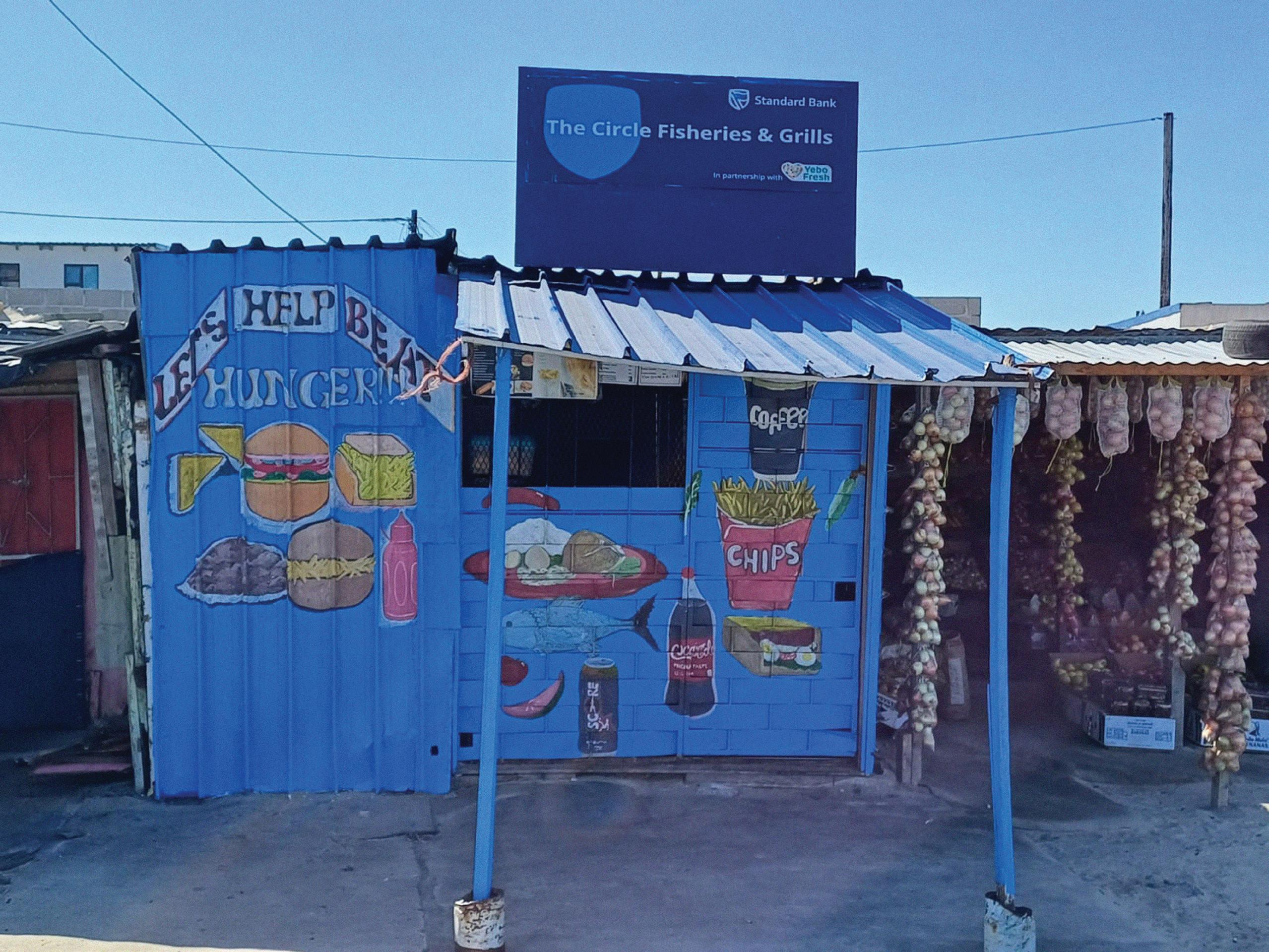


2. Ryze Entrepreneurship Development Programme
In 2023, this programme developed 65 township businesses in the Free State and Northern Cape regions, focusing on compliance and nancial management. Eleven SMEs received R760 000 in grant funding. The programme continues to support a new cohort of participants in 2024.
3. Basali Development Programme
Launched in 2022, this national programme provides business skills and development to women-owned businesses. In 2023, it supported 100 women-owned businesses and disbursed R3.5-million in grant funding. The programme continues in 2024 with 200 women-owned businesses enrolled.
4. GPG Township Development Programme
In partnership with the Gauteng Provincial Government, this ve-year programme supports 100 township SMEs annually, providing business and skills development. The top 20 businesses in 2023 received R1-million in grant funding.
5. Enabling township retailers to start, manage and grow
In 2023, through a partnership to support township retailers with access to a convenient stock ordering capability, we identi ed 40 businesses located in Gauteng and the
OUR DIVERSE
AND TARGETED SUPPORT SYSTEMS ENSURE THAT SMES CAN ACHIEVE SUSTAINABILITY AND GROWTH, CREATING A ROBUST AND RESILIENT BUSINESS ECOSYSTEM.
Western Cape and provided them with rebranding of their stores. By investing in the appearance and visibility of these township businesses, we aim to increase foot traf c and sales, thereby contributing to their growth and sustainability.
6. Standard Bank Kasi SME Summit
Standard Bank partnered with Kaya FM to host the rst Standard Bank Kasi SME Summit in October 2023. This initiative aimed to equip township businesses with business skills and strategies to help them start, manage and grow their businesses. As part of the summit, we hosted masterclasses with in uential business experts who gave delegates insights into business compliance, nancing, access to markets and the macroeconomic factors impacting SMEs. There was also a pitch competition where three SMEs were given grants worth R170 000.
7. Technology SME development initiative
In collaboration with strategic partners, such as Salesforce, Amazon and Microsoft, this bank-wide programme aims to create

and grow small businesses in technology and engineering. It includes subcontracting work and technology spend to local SMEs, decreasing offshore dependency.
Standard Bank’s ESD division is committed to developing sustainable SMEs that drive economic growth. Through strategic funding, business development and market access, we empower black-owned businesses to start, manage and grow their enterprises.
Our diverse initiatives and targeted support systems ensure that SMEs can achieve sustainability and growth, creating a robust and resilient business ecosystem. By turning possibilities into opportunities, Standard Bank helps SMEs navigate their journey towards success and prosperity.


The failure rate of small businesses is known to be staggering. This is precisely why enterprise and supplier development programmes have such an important role to play. But what, exactly, should corporates be doing to capacitate enterprises and suppliers? By LISA
WITEPSKI
The challenges facing small businesses are long and well documented: access to funding and technology, limited market access, cash flow issues and inadequate skills all combine to make survival a struggle. “Typically, we find that entrepreneurs may have a great product and, perhaps, the sales and marketing skills to sell it, but they lack knowledge around financial processes and governance and don’t have appropriate technological support,” comments Annie McWalter, CEO: South African Institute of Chartered Accountants (SAICA) Enterprise Development and The Hope Factory.
This is where enterprise and supplier development (ESD) programmes play a role. McWalter explains that, since SAICA is the professional body for chartered accountants (CAs), associated general accountants (AGAs) and accounting technicians (SA), it makes sense that they capacitate small businesses in the areas they know best.
SAICA Enterprise Development (ED) and The Hope Factory, two entities belonging to SAICA, are involved in developing and growing the small, medium and micro enterprise (SMME) ecosystem. SAICA ED in particular, engages with its members –CAs(SA) and AGAs(SA) – who have their own accounting practices and can work with them to strengthen an enterprise or supplier development SMME with skills in finance and governance areas. “We establish a dashboard to show the company or SMME where it is going, then we ensure that its management
“FINANCIAL SUPPORT OR AN OPERATIONAL INVESTMENT WORKS WELL ONLY IF COUPLED WITH GOOD NONFINANCIAL SUPPORT SUCH AS COACHING OR CAPACITY-BUILDING.”
– ANNIE MCWALTER

accounts and annual financial statements are up to date through a SAICA-associated accounting practice,” McWalter says.
Once the business owner has established proper financial discipline, they receive coaching to help hone their skills. This bolsters sustainability, while establishing a track record means that any plans for growth are less likely to be hampered by an inability to access funding.
Sanlam is another organisation leveraging its internal ecosystem to support and create market access for SMEs. Nozizwe Vundla, head of the Sanlam Foundation, notes that the firm strives to create 360-degree, wraparound support.
Its Masakhe-Siyakhula-Asindize ESD programme, which targets women-owned companies, is a case in point. In addition to offering business development support, coaching and pairing business owners with mentors, the programme hosts boot camps and webinars, while addressing skills that are typically lacking, such as human resources, cash-flow management and even technology issues.
Both McWalter and Vundla stress the importance of starting any relationship with suppliers and enterprises with a full diagnostic assessment. “We look at where the business is in its life cycle, assessing where there are gaps and understanding their pain points so we can capacitate them appropriately. You have to immerse yourself in their world because each SME is different,” Vundla states.
She adds that this the relationship must be viewed as long-term. Sanlam’s process has a duration of up to 18 months.
April Baloyi, divisional executive: emerging markets at Capitec, agrees that interventions must be tailored. “You cannot implement a one-size-fits-all approach. If support is not relevant and impactful, the likelihood of success decreases.”
He further advocates adopting a “teach-a-man-to-fish” approach, so there is real skills transfer. This is key to sustainable growth and development, so interventions, such as mentoring and learning opportunities, must be ongoing, rather than a one-off.

With this in mind, McWalter warns against handouts. “Many corporates think they are fulfilling their ESD responsibilities simply by donating equipment such as laptops or a vehicle. This destroys the ability to hustle – an entrepreneur’s most valuable quality –by making them dependent on handouts. Financial support or an operational investment works well only if coupled with good nonfinancial support such as coaching or capacity-building.”
Handouts run counter to the principles of ESD in another way, too, she continues. An ESD programme aims to help entrepreneurs and suppliers build better businesses. As their skills improve, so too does their ability to compete with more established entities, helping to drive costs down. Corporates benefit, but so do the entrepreneurs and suppliers who may now become more attractive to other potential clients. “In contrast, handouts drive behaviours that are unlikely to contribute to development,” McWalter says.
Corporates that are unsure of what small business development entails would do well to consult a reputable specialist, McWalter recommends.
That said, Vundla claims that it is not enough to appoint a specialist and then leave them to manage the programme.
“Many corporates choose to keep at arm’s length from their interventions, leaving the day-to-day management to the implementing partner. We’ve found it works best to work closely with the implementing partner.”
It’s equally a good idea to ensure that employees appointed to lead ESD have the right skills. Ideally, they should have run their own business at some stage, so that they have a deep understanding of entrepreneurship developed through personal experience, McWalter advises.
Once the right skills are in place, it’s vital to look at other stakeholders who may be able to propel the programme forward. Baloyi says collaboration is key, whether with government agencies, financial institutions, industry bodies or community organisations. “Such partnerships create a supportive ecosystem for small businesses, pooling resources and expertise to drive collective success,” he maintains.
Vundla believes collaboration should go further, even if it means teaming up with other players in the same market. “If you know of an SMME that’s performing well, you should work to find a way to create market access.” Such an approach might be difficult for corporates that are focused on building their own business, Vundla acknowledges, but in creating a broader market for SMMEs, we ensure their survival – and the health of the South African economy.
Baloyi points out that there are many practical ways corporates can assist, from financial assistance (low-interest loans, microloans or purpose-specific funding, or even innovative financial products such as revolving credit facilities and cash-flow-based lending) to promoting digital adoption.
“Encouraging digital banking solutions, such as cellphone apps and payment gateways, to enhance efficiency and competitiveness is a great place to start, but business owners may also need training to help them integrate digital tools in their operations.”
Like Vundla, Baloyi feels it is important to create market access, and suggests facilitating networking opportunities, such as trade fairs and business expos, where entities can meet potential clients and investors. “Lastly, companies should focus on regulatory support by offering resources and advisory services to help small businesses navigate regulatory requirements and achieve compliance,” he says.
Suppliers should not be forgotten –they’re essential for building an efficient and resilient supply chain. “Companies can simplify the onboarding process by reducing barriers to entry, streamlining documentation requirements and providing
“YOU CANNOT IMPLEMENT A ONE-SIZE-FITS-ALL APPROACH. IF SUPPORT IS NOT RELEVANT AND IMPACTFUL, THE LIKELIHOOD OF SUCCESS DECREASES.”
– APRIL BALOYI

clear guidance to make the process more accessible. Partnering with suppliers through closed-loop systems can guarantee a steady demand for services and products from partnering organisations. By directly linking suppliers to business clients, companies can enhance small businesses’ capabilities and resilience, driving sustainable growth and innovation,” says Baloyi.
“Companies can also focus on collaboration and strategic partnerships,


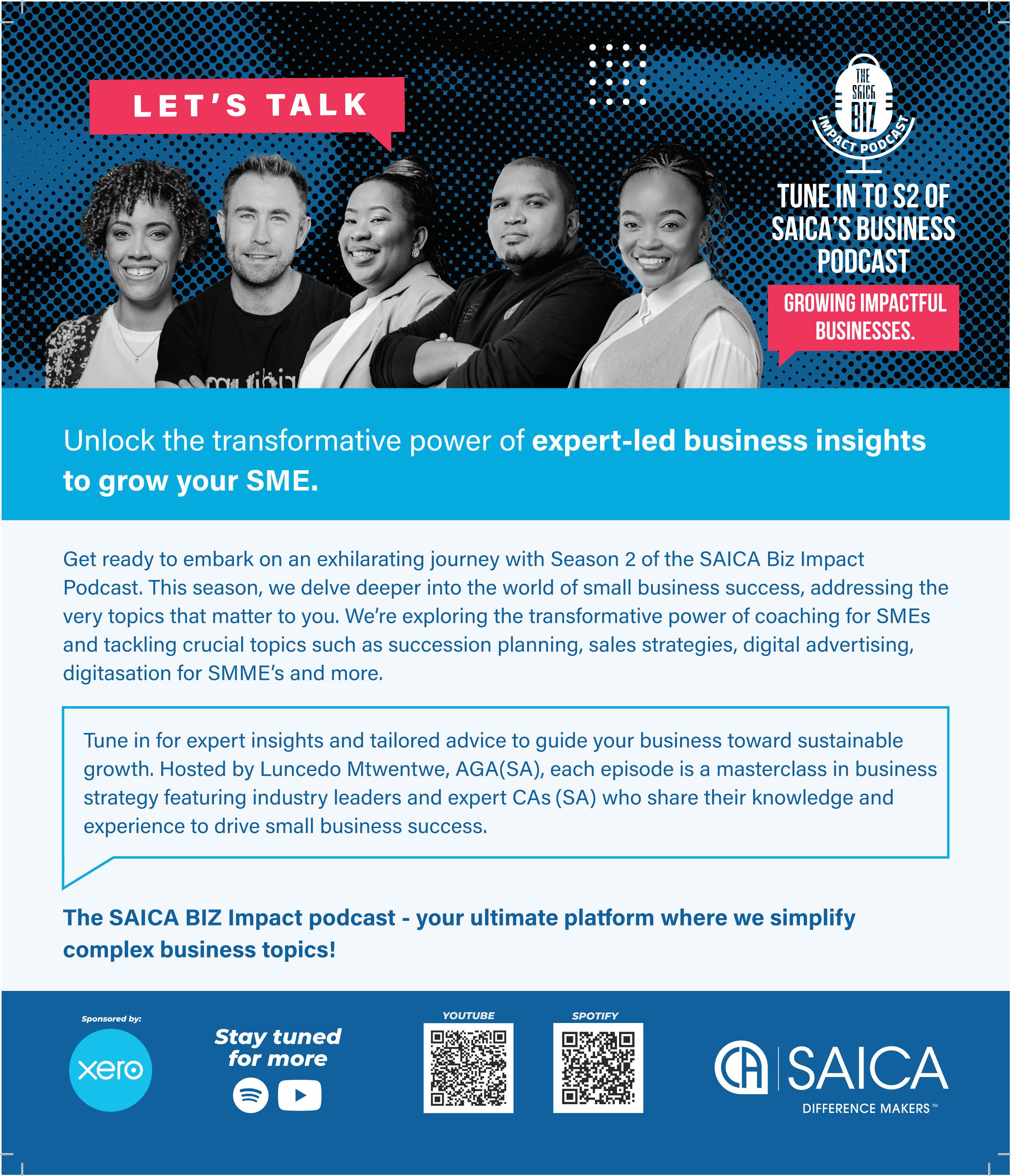

The hope FacTory and SaIca e nTerprIS e DevelopmenT provide support and training to small, medium and micro enterprises to ensure their development and success
Nonprofit organisation, The Hope Factory, was established in 2004 to empower South Africans to become financially sustainable. In 2018, The Hope Factory launched SAICA Enterprise Development to house all its enterprise and supplier development (ESD) initiatives. Together, they play an active role in economic transformation by advancing the sustainable growth of entrepreneurial black businesses.
SAICA Enterprise Development (SAICA ED) and The Hope Factory (THF) provide platforms for SAICA members and other companies to earn points for their B-BBEE scorecard while impacting the South African economy through small business development and job creation. SAICA ED provides strategic ESD programmes and customised projects that grow South Africa’s entrepreneurial sector, while THF delivers impactful socioeconomic and skills development initiatives by enabling
unemployed black South African citizens (with a key focus on youth and women) to generate their own income and contribute to the United Nations’ Sustainable Development Goal (SDG) “Eradicating Poverty” (SDG 1), among others.
Collectively, SAICA ED and THF provide a dynamic entrepreneurial “pipeline”, empowering small businesses from start-up level all the way to becoming a financially sustainable small, medium and micro enterprise (SMME). With 20 years of experience, SAICA ED and THF have the expertise to design, manage and implement financial excellence and SMME development solutions for start-ups and small businesses nationwide.
SAICA ED and THF have achieved significant milestones in the past two decades and are proud to have positively influenced communities, the youth and unemployment through upliftment initiatives. In the past 20 years, their commitment and trust in their work have allowed them to deliver a positive impact each year.
Both organisations have always looked forward to collaborating with corporate South Africa to ensure they continue to serve communities through entrepreneurial skills development and job creation initiatives with customised training programmes that continue to enhance and build the SMME ecosystem nationwide.
Over the past 20 years, SAICA ED and THF have positively impacted and continued to make a difference by empowering over 3 000 SMMEs/entrepreneurs in various sectors through SAICA ED’s strategic ESD programmes and customised projects. The Hope Factory has implemented impactful socioeconomic and skills development initiatives that have made a difference in many South African communities. The resilience and agility of the two organisations were evaluated
Collectively, SAICA ED and The Hope Factory provide a dynamic entrepreneurial “pipeline”, empowering small businesses from start-up level all the way TO to becoming a financially sustainable small, medium and micro enterprise.

in the last two decades and the ability to continuously innovate their customised offering to keep relevant with the current needs of the industry has certainly proved successful.
SAICA ED’s agship programme, Cohort ve, was a signi cant moment to celebrate resilient entrepreneurs who know what it takes to achieve a milestone.
This virtual agship programme saw 18 dedicated entrepreneurs who went out of their way to attend and overcome the usual barriers of internet connectivity during load shedding. Apart from being entrepreneurs who needed to make a living and a pro t in an extremely competitive environment with a sluggish economy, their commitment demonstrates the value of the SAICA ED agship programme.
The programme intends for SMMEs to become nancially savvy – able to understand their business numbers and distinguish between business and personal nances – and to implement robust nancial management structures in their businesses. This objective has been ful lled as the SMMEs now know how to put nancial management processes in place and can recognise their income.
Through the eight-month intervention the SMMEs experienced with their volunteer nance coaches, four new jobs were created, the average revenue growth of the SMMEs increased by 19 per cent and an average net pro t margin growth of 22 per cent was experienced across the 18 SMMEs.
Highlights from the SAICA ED agship programme include Masamkele Thandolwetu Maqavana, CEO of Million Bene ts Pty
Ltd t/a Kasi Digi Tech Studio, who won the special award for the entrepreneur with the highest increase in their net pro t. Lufuno Rasoesoe, founder of Lajoya Holdings, won the most jobs created. LeRaw Home and Crafts was also recognised for the highest average revenue growth after eight months in the agship programme.
Encouraging comments were received from other entrepreneur graduates, such as Tidimalo Nkosi, founder of Melokuhle Holdings, who said: ”The mentoring sessions helped me to understand and be conscious of my spending. I also realised the importance of knowing exactly where our money is going and how we can seek ways to decrease the expenses.”
Marshall Makombe, volunteer KPMG coach, comments: “I do not think there is a better programme out there than this one. There was always a clear line of communication, and it was excellently executed.”
THF also successfully concluded a 12-month nancial skills booster programme in the small town of Kuruman in the Northern Cape. Nine female small business owners were part of the programme and it was an honour to witness female artisan participants achieve this milestone.
Through its socioeconomic development and skills development programmes, THF aims to equip and empower women and youth to generate their own income and improve their living conditions through increased economic activity at a community level.
This programme focused on nancial management, intended to boost microenterprises with skills that will help their businesses thrive nancially through the provision of nancial boot camps and one-on-one coaching sessions with assigned nancial
coaches.“The one-on-one sessions with my nancial coach were amazing, I now know how to track and understand my nances, my coach helped broaden my knowledge and explained how to expand my business, which has boosted my con dence,” says Naledi Tshabang from NPT Solutions – one of the participants.
As a result of the programme interventions, the entrepreneurs have better nancial decision-making skills and their clientele has also grown, resulting in increased income and pro t. Now, they can develop and practise business budgeting. “Since I joined the nancial skills booster programme, my turnover has increased. I can keep nancial records and save money. I have managed to buy new equipment for my company. This programme has been very helpful for me and my business. All thanks to my nancial coach, Linda, and The Hope Factory,” adds Boitumelo Shushu from Theshu (Pty) Ltd.
Emily Dapula from Tebonngwe Enterprise was the entrepreneur who generated the most income while on the programme, due to signi cantly growing her customer base. This enabled her to hire part-time employees.
THF is extremely proud of all the women and thankful to its funding partner, AECI, which made this project possible. THF is calling on the private and public sectors to get in touch to continue to serve communities through the organisation’s socioeconomic development and skills development initiatives countrywide.


For more information: SAICA Enterprise Development
Email the investor relations co-ordinator cherylann@saicaed.co.za www.saica.org.za
The Hope Factory
Email the senior business development manager jolandip@thehopefactory.co.za www.thehopefactory.co.za
Artificial intelligence has improved efficiency and enabled better data-driven decision-making in the enterprise and supplier development space, but it’s also removed much of the human relationship element, writes TREVOR CRIGHTON
While the COVID-19 pandemic forced many businesses to transform digitally more quickly than they had planned, the arrival of mainstream arti cial intelligence (AI) tools over the last 18 months has arguably catalysed an even greater shift in the business space. Together, these two events have delivered huge bene ts for businesses – but something has also been lost in the process.
Allon Raiz, founder and CEO of Raizcorp, says whereas Teams or Zoom meetings used to be the exception, 50 per cent of his interactions with enterprise and supplier development (ESD) entrepreneurs are now virtual – and he’s pushing for a return to face-to-face interaction in meetings, learning and training. “So many interactions in the ED and SD space have completely changed – some for the better and some for worse,” he says.
“Virtual meetings offer greater convenience and lower travel costs for entrepreneurs, but the quality of the interaction has declined. A big part of ESD is the human connection and trust that you build and the way entrepreneurs can interact with each other or with their mentors face-to-face when going through a rough patch. A trust relationship takes much longer to build in

the digital space than if you have the person in front of you.” Raiz says that online training, in particular, can become ineffectual as people get bored without energy in the room and people around them to keep them honest.
Naledzani Mosomane, head: enterprise and supplier development in business and commercial banking at Standard Bank South Africa, says that the engagement model for ESD support depends on the type of small, medium and micro enterprises (SMMEs) you are engaging and the resources they can access. “Some ESD participants have access to technological tools that make it easier for the ESD participant and more cost-effective for the business development service provider to run virtual programmes,” she says.


“Furthermore, virtual programmes enable us to reach more SMMEs than physical or face-to-face sessions and allow the ESD participant to attend a programme without having to leave or shut down their business.

camaraderie among ESD participants. This is important in terms of building networks.”
Raiz says the shift to digital has been a challenge for the thousands of entrepreneurs operating outside peri-urban areas in the country because of connectivity issues and the cost of data. “Entrepreneurs in those areas then need to nd a connection or someone willing to share theirs – or we have to work with a Wi-Fi-enabled space where the entrepreneurs can come together to have a digital interaction.”
Mosomane explains that, regardless of the delivery method, it takes commitment from the ESD participant and business development service provider to attend these initiatives. “Building the relationship is a work in progress and therefore regular engagements and touchpoints are necessary to ensure the participant is on track to derive success from the initiatives,” she says.
On the other hand, physical programmes help create a
Mosomane says digital transformation has pushed, and will continue to push, ESD participants to enhance their technological
“THE SHIFT TO DIGITAL HAS BEEN A CHALLENGE FOR THE THOUSANDS OF ENTREPRENEURS OPERATING OUTSIDE PERI-URBAN AREAS IN THE COUNTRY BECAUSE OF CONNECTIVITY ISSUES AND THE COST OF DATA.” – ALLON RAIZ


“INTEGRATING AI INTO ESD PROCESSES OFFERS NEW AVENUES FOR ENHANCING EFFICIENCY, FOSTERING INNOVATION AND ENSURING COMPLIANCE WITH B-BBEE GOALS.” – STEVE SUTTON
efficiencies and processes, give them a competitive advantage locally and within the global context, help the bank better understand their SMMEs and their needs thanks to improved data availability, and shift traditional banking methods to more efficient and impactful methods through diverse product offerings that meet customers’ needs.
“There are challenges to digital transformation, of course – such as risks in implementing digital transformation, particularly with customer data and information. Where ESD participants are not resilient to change and transformation, they could decline in growth rapidly,” she explains.
“Some ESD participants also simply cannot afford the cost of digital transformation;

others do not understand the value digital transformation will have for their business, or they may lack the skills to adopt or implement it.”
Raizcorp’s bridge to AI for its ESD entrepreneurs is a product called Flowcode, a digital product designed to provide the required scaffolding for businesses to scale without falling into the all-too-common traps business growth presents. “We’d have a conversation with the business owner to learn about their business, their specialisations, where and how they work and who their previous clients were – and then discuss and dissect specific strategies based on their needs and experience and our knowledge,” explains Raiz.
“Now, with AI more easily accessible, we’re seeing more and more generic strategies coming our way. Business owners are losing sight of the nuance involved in developing plans specific to them and their worlds – a ChatGPT-created strategy certainly contains facts. However, those facts are meaningless outside the context of the business. If I were going to make an investment decision, I wouldn’t rely on AI to decide for me – and it appears that many entrepreneurs are effectively trying to replace reading and personal understanding with simply getting an output,” says Raiz.
Mosomane says that adopting AI mindfully can have several benefits for an ESD supplier, including the opportunity to digitise access to market opportunities processes, more effectively managing data compilation for both suppliers and enterprises, improved ESG data and reporting and supplier and business profiling on digital platforms instead of circulating them manually.
Steve Sutton, founder of RED3SIXTY, agrees that AI is a catalyst, rather than a tool. “By integrating AI into our ESD strategies and linking it seamlessly with supplier chain management, we’re not just ticking boxes on the B-BBEE (broad-based black economic empowerment) scorecard. We’re unlocking unparalleled growth, innovation and inclusivity; setting the stage for a brighter, more equitable economic future for South Africa,” he says.
Sutton believes applying AI correctly can enhance supplier analysis, offer predictive insights, optimise procurement strategies, monitor performance in real-time and help design bespoke training and development programmes, ensuring ESD suppliers’ sustained growth and success.
“Integrating AI into ESD processes offers new avenues for enhancing efficiency, fostering innovation and ensuring compliance with B-BBEE goals,” he explains. “For example, AI can significantly enhance the process of identifying and selecting suppliers that meet B-BBEE criteria. Traditional methods of supplier evaluation can be labour-intensive and time-consuming, but AI can streamline these processes. By analysing large datasets, AI tools can quickly assess supplier credentials, financial stability and compliance with B-BBEE requirements, ensuring that enterprises partner with the right suppliers.”
Sutton adds that AI can play a crucial role in the continuous development and support of suppliers. “Through predictive analytics and machine learning, AI can identify the specific needs and areas for improvement among suppliers. This allows enterprises to provide targeted support, such as training

Small, medium and micro enterprises in South Africa are increasingly digitising their businesses to boost growth. THANDO PATO speaks to experts about what the sector should be doing to help business owners reach their potential
The Levelling the SME Playing Field study, commissioned by the Vodacom Group, the Vodafone Group and Safaricom, shows that 70 per cent of small, medium and micro enterprises (SMMEs) in Africa are investing in technology to improve their growth. The study draws on interviews with 400 SMMEs in eight African nations (South Africa, Kenya, Egypt, Ethiopia, Mozambique, Tanzania, the Democratic Republic of Congo and Lesotho), ranging in size from 1 to 200 employees.
However, SMME owners who participated in the study reported challenges with the adoption and integration of digital technology in their businesses. Thirty-nine per cent of respondents from South Africa cited the high cost of technology upgrades and renewals as key hindrances, with 32 per cent citing dif culty in integrating new technologies with existing systems and regulatory con nements.
Seventeen per cent of South African respondents also claimed internet connectivity and access as challenges while 39 per cent said they grapple with a lack of support and training to help employees use technology.
Sannesh Beharie, managing executive for SME and mobile products at Vodacom Business, says: “Access to reliable and affordable connectivity is crucial for the growth and ef ciency of SMMEs. Telecoms companies play a vital role in enabling this access through robust and scalable infrastructure. Players in the industry should also be providing SMMEs with digital tools
and technologies that assist in digitising key components of their value chains, thereby unlocking operating ef ciencies.”
One of the solutions that may also assist SMMEs involves big businesses offering mentorship, support and funding, Beharie says. “Many telecoms operators service large enterprises and I believe therein lies an opportunity for partnerships, where the enterprise and the provider can both work with SMMEs to help provide mentorship, funding and digital infrastructure.”
Considering the nancial and lending challenges SMMEs face, Beharie says telecoms companies should also be providing, as part of their value proposition, nancial and lending solutions to SMMEs facing challenges with securing nance from traditional lenders.
But the area Vodacom has identi ed as a key challenge, and where the telecoms industry needs to lend support, is skills development, he says. “Skills development remains a key challenge in the SMME sector. Telecoms companies can play a key role here by enabling skills development platforms and programmes for SMMEs. Vodacom, as an example, has enabled over 100 000 SMMEs with a skills development platform called V-Hub that provides skills development content, tools and advisory services to support SMMEs.”
Beharie says Vodacom has connected over 100 000 SMMEs
“SKILLS DEVELOPMENT REMAINS A KEY CHALLENGE IN THE SMME SECTOR. TELECOMS COMPANIES CAN PLAY A KEY ROLE HERE.” – SANNESH BEHARIE
with mobile and xed services in South Africa. “We offer tailored propositions, based on the type of business and its particular needs. For example, a solution for a plumbing business with ve employees is signi cantly different to a solution targeting an IT organisation with two hundred employees. Each business has speci c needs, and we provide the products and solutions to meet those needs.
“The main driver behind our services is supporting the SMMEs’ business value chains and helping them unlock operating ef ciencies. Our tailored propositions are aimed at supporting SMMEs in growing their business by offering not only connectivity, but also productivity, advertising and nancial services.”
Beharie says Vodacom has placed a key focus on cybersecurity investments and provides cost-effective solutions to SMMEs to secure their connectivity and business infrastructure from security breaches. “With increased connectivity comes the increased risk of cybersecurity. SMMEs are vulnerable to cyberthreats, now more than ever, and have to invest in security solutions to protect their business.”
In 2023, Vodacom SA pledged R60-billion in capital investment over the next ve years to assist SMMEs with connectivity and infrastructure. This follows a previous R50-billion venture pledged in 2018. “This has contributed to enhanced network resilience and has kept customers connected, even during load shedding, with 4G and 5G being rolled out to more parts of the country to address the demand for affordable connectivity,”

VUKANI MAGUBANE looks at how to build a sustainable supply chain within the mining sector while promoting inclusion and ensuring ethical sourcing
Small, medium and micro enterprises (SMMEs) play a crucial role in the mining supply chain. These businesses, often rooted in local communities, provide various services and products essential for mining operations.
Integrating SMMEs into the supply chain has significant benefits, including creating jobs, reducing poverty and improving the living standards in mining communities by boosting economic activities that lead to more resilient and self-sufficient communities.
“Small businesses aren’t just the engine of our economy; they’re the engines of communities,” says Larisha Naidoo, head of Zimele, Anglo American Group’s enterprise and supplier development (ESD) programme.
means to stand on one’s own two feet and be independent.
In a country with a high unemployment rate and few economic opportunities, the Zimele model is an example of how mining companies can empower local entrepreneurs to stand on their own and create viable livelihoods.

“Many large companies have enterprise and supplier development programmes, but to be successful they must be able to match what the company needs to procure with who is able to supply the necessary goods and services in any given community,” she adds.
Naidoo says to make these links, businesses must have deliberate supply chain policies, practices and targets focused on local procurement. There must be strong engagement with community businesses so corporates can appreciate the issues faced by small business owners and their abilities and skill sets.
Zimele was established in 1989 to assist SMMEs in making a difference in their communities by supporting black businesses and entrepreneurs. It is South Africa’s largest enterprise development programme. Zimele
The programme has successfully integrated numerous SMMEs into Anglo American’s supply chain, resulting in job creation, local economic development and improved community relations.
“It is vital that these small businesses are created, nurtured and sustained to become valued participants in a supply chain,” Naidoo says.
“Once you align the community’s skills and needs with the business imperatives, and corporate supply chains dovetail with development programmes, supplier development supports SMMEs and an organisations’ inclusive procurement imperatives,” she explains.
In a world increasingly conscious of sustainability and social equity, Zimele has evolved and continues to make a difference.
Through its ESD programmes, Zimele has developed 3 365 beneficiaries and 401 through the company’s supplier development programmes – 39 per cent youth-owned and 39 per cent black-women-owned.
“The numbers are clear: entrepreneurship is the beating heart of the South African economy. South Africa’s estimated 2.5 million small businesses provide around forty per cent of corporate turnovers, generate between sixty per cent of gross domestic product and create ten million jobs and employment opportunities,” says Naidoo.
“BY CREATING JOBS, ENTREPRENEURS MAKE AN OUTSIZED CONTRIBUTION TO THEIR COMMUNITIES AND THE NATIONAL ECONOMY.” – LARISHA NAIDOO
“By creating jobs, entrepreneurs make an outsized contribution to their communities and the national economy.”
Zimele uses several key initiatives to help support and promote local business development, including:
• Mentors who understand business problems and can support SMMEs to manage their operations and, in turn, translate into growing revenues.
• Help for community-based SMMEs to improve financial management systems.
• Getting to know community suppliers through open days and information sessions.
• Technical skills training.
• Training SMMEs to tender more effectively, price correctly and better understand contract management.
“We aim to create an eco-system of development partners that support SMMEs. Technical skilling is extremely important, with planning the procurement needs of the operations parallel to understanding and getting to know our local suppliers’ skills and abilities,” says Naidoo.
“Zimele has to work closely with the operations to gain insights into the challenges SMMEs experience at our local mines when integrating them into

TREVOR CRIGHTON asks if ESD is doing what it’s meant to do
When broad-based black economic empowerment (B-BBEE) legislation was enacted, it was aimed at “forcing” businesses to allow previously disadvantaged people and their businesses to participate in the economy.
Nabeela Vally, head of business development at Edge Growth, says complementary enterprise and supplier development (ESD) legislation aimed to grow black-owned strategic suppliers, ultimately building generational wealth among black people and correcting the wrongs of the past.
“Companies started looking at ESD through a compliance lens with a focus on enforcing the legislation – and mostly, decision-making was ‘tick-box’. Early on, people would front or do it for the wrong reasons to keep contracts. We’re now moving into the view through an impact lens.”
“LOOKING AT ESD THROUGH THE IMPACT LENS, WE HAVE THE C-SUITE BUYING IN WHEN THEY SEE THE DIFFERENCE PROPERLY RUN PROGRAMMES CAN MAKE.”
– NABEELA VALLY

see the difference properly run programmes can make. They see how small, medium and micro enterprises (SMMEs) contribute to the gross domestic product and this encourages them to commit to ESD and SMME development. The buying decision is now made not to increase their BEE score, but because they can see the results,” she says.
“While ESD contributes positively to black economic empowerment (BEE) scores, MultiChoice believes the ultimate aim should be genuine economic empowerment and development. Scoring systems are a great way to incentivise sustainable growth and impact, but ESD programmes should not be a tick-box exercise,” says Dr Keabetswe Modimoeng, group executive head: regulatory and corporate affairs at MultiChoice.
Corporates have seen the impact ESD can have on delivering broader business strategies. “ESD has become much more impactful as a result – which is why it’s so frustrating when suppliers and corporates don’t capitalise on the good ESD can do in societies and communities,” says Vally.
“Looking at ESD through the impact lens, we have the C-suite buying in when they
MultiChoice runs several ESD programmes, based on the belief that ESD fosters inclusive growth by creating opportunities for smaller, often black-owned businesses, contributing to South Africa’s economic transformation goals. “A diverse supply chain brings fresh perspectives and innovation, bene tting the entire industry,” says Dr Modimoeng.
He says the ultimate aim of MultiChoice’s ESD programme should be to empower businesses to become self-suf cient and competitive while driving innovation and contributing to the economy.
“We have various initiatives that have allowed us to grow a healthy ESD ecosystem. The MultiChoice Africa Accelerator programme aims to connect African entrepreneurs with global investors, facilitating business growth and development.




In 2023, 11 entrepreneurs from South Africa secured over US$17-million from investors in the United Arab Emirates. In the same year, the Enterprise Development Fund funded four new companies, including two owned by black women. “This funding was directed towards tech-enabled sectors, contributing to the creation of 395 jobs,” explains Dr Modimoeng.
Dr Modimoeng says Africa is ripe with opportunities for innovation and growth.
“However, African start-ups attract only a fraction of global venture capital. Africa’s digital economy is projected to soar from US$115-billion to US$712-billion by 2050.
“In the face of this rapid expansion, MultiChoice is committed to empowering entrepreneurs, driving innovation and helping to shape Africa’s future.”
Edge Growth recently collaborated with the Gordon Institute of Business Science Responsible Finance Initiative and Centre for Business Ethics to develop a white paper, Enhancing Enterprise and Supplier Development Ecosystem Effectiveness in South Africa. The research yielded 10 insights into the South African ESD space, including:
• ESD effectiveness begins with the overall business philosophy about the role of business and a high level of commitment to transformation as a mechanism for achieving a more equitable society;
• ESD effectiveness can be improved when programmes are designed around an evidence-based understanding of what SMMEs need and how best to deliver developmental support aligned with corporate strategy and focused on meeting SMME needs; and


Selected small businesses from South, East and West Africa receive support to promote their brands, enhance investor readiness and connect with potential investors globally.”


• the effectiveness of supplier development programmes may be improved by ensuring they are better integrated into the corporate’s operations and strategy. It also delivered an action agenda based on those insights in the hope of maximising the potential of ESD to achieve its stated aim: seeking to simultaneously strengthen and diversify an organisation’s supply chain while stimulating economic transformation and job creation.

A resilient supply chain is a visible one,
Aresilient supply chain is crucial because it minimises disruptions, keeps customers happy, ensures financial viability and gives organisations a competitive edge. In the same vein, supply chain visibility is critical for enhancing resilience. Building trust and promoting stakeholder collaboration is equally vital to achieving this visibility. The recent chaos caused by the COVID-19 pandemic is an excellent example of what can happen if the supply chain comes under pressure. Therefore, it is vital to increase resilience to ensure that unforeseen circumstances do not derail any supply chain. But how can this be achieved?
Wesley Niemann is a lecturer and researcher at the University of Pretoria’s Department of Business Management. He defines supply chain visibility as “the capability of a firm to track and monitor various components, products and shipments throughout the entire supply chain process, from the procurement of raw materials to the delivery of finished products to the end consumer”. He adds: “Supply chain visibility encompasses real-time data collection and sharing across all stages of the supply chain, facilitating the flow of information regarding inventory status, location and condition.”
But why is supply chain visibility so important? Jerome Roberts, the global vice president of marketing at Blume Global, has the answer. Blume Global is a United States-based company that provides a platform powered by artificial intelligence (AI) technology using a digital map of the supply chain world to integrate across different transportation modes.
Roberts says: “You can’t control what you don’t see. You have to see to act and act to make an impact. Visibility must be partnered with execution because that’s ultimately the goal: to get the performance where you need it to be.”
Niemann says: “Supply chain visibility is paramount to enhancing resilience as it equips organisations with the necessary insights to anticipate, respond to and recover from disruptions.” He adds that visible supply chains allow “firms to identify potential bottlenecks and vulnerabilities in real-time, thus enabling proactive measures to mitigate risks”.
He also believes “high visibility in supply chains contributes to greater agility and adaptability, allowing firms to swiftly reconfigure supply chain networks in response to unforeseen events such as natural disasters, geopolitical tensions or pandemics”.
Roberts notes that during the days of predictability, supply chain managers could easily get away with good forecasting and planning. However, he observes that the challenge with that model is that the “key to forecasting is consistency” – now a rare commodity. He adds that it’s hard to plan without consistency, and the best way to remain on top of the situation is to have “your eyes open”.
Roberts argues that visibility in the supply chain ensures all stakeholders can easily adjust their plans based on real-time information regarding what is happening to their shipment.
Generally, a visible and resilient supply chain has as few barriers as possible and is characterised by transparency among all stakeholders. Niemann acknowledges this and identifies some common barriers: “Siloed information systems, lack of trust and reluctance to share proprietary data.” He adds: “Transparency in the supply chain facilitates seamless information flow and collaboration, essential for achieving comprehensive visibility. By fostering an environment of openness and trust, organisations can integrate their information systems and processes, enabling real-time data sharing and enhancing the accuracy and timeliness of information.”

“SUPPLY
CHAIN VISIBILITY IS PARAMOUNT TO ENHANCING
RESILIENCE AS IT EQUIPS ORGANISATIONS WITH THE NECESSARY INSIGHTS TO ANTICIPATE, RESPOND TO AND RECOVER FROM DISRUPTIONS.” – WESLEY NIEMANN
Wesley Niemann, a lecturer and researcher at the University of Pretoria’s Department of Business Management, says: “Increasing a supply chain’s resilience involves several strategic and operational initiatives to enhance its ability to withstand and recover from disruptions.”
Some of the common approaches he identified include:
• Reducing dependency on single suppliers by sourcing from multiple geographic regions to mitigate the risk of localised disruptions.
• Implementing advanced technologies, such as the internet of things, blockchain and artificial intelligence to achieve real-time monitoring and predictive analytics, improves the ability to anticipate and respond to disruptions.
• Maintaining safety stock and strategic reserves to buffer against supply chain interruptions.
• Designing supply chains that can be rapidly reconfigured to adapt to changing conditions, such as shifting production to alternative locations or suppliers.
• Engaging in joint risk assessment and mitigation planning with key stakeholders to develop co-ordinated responses to potential threats.
